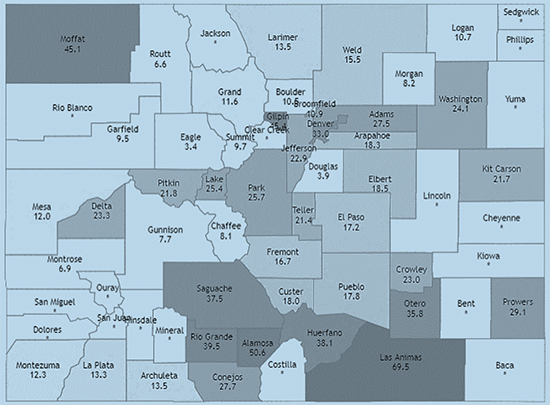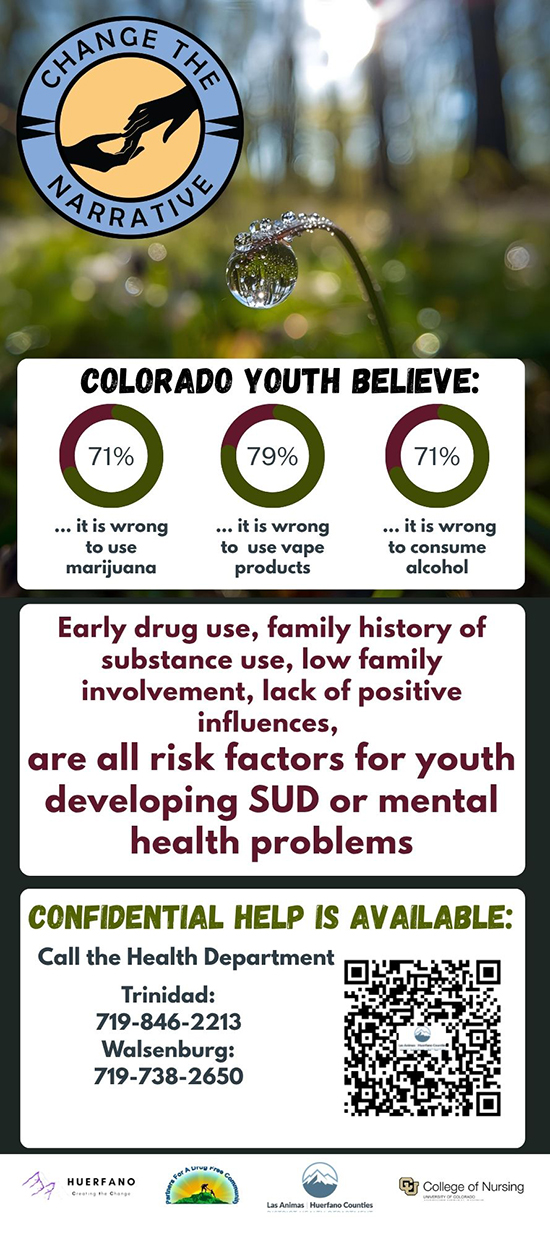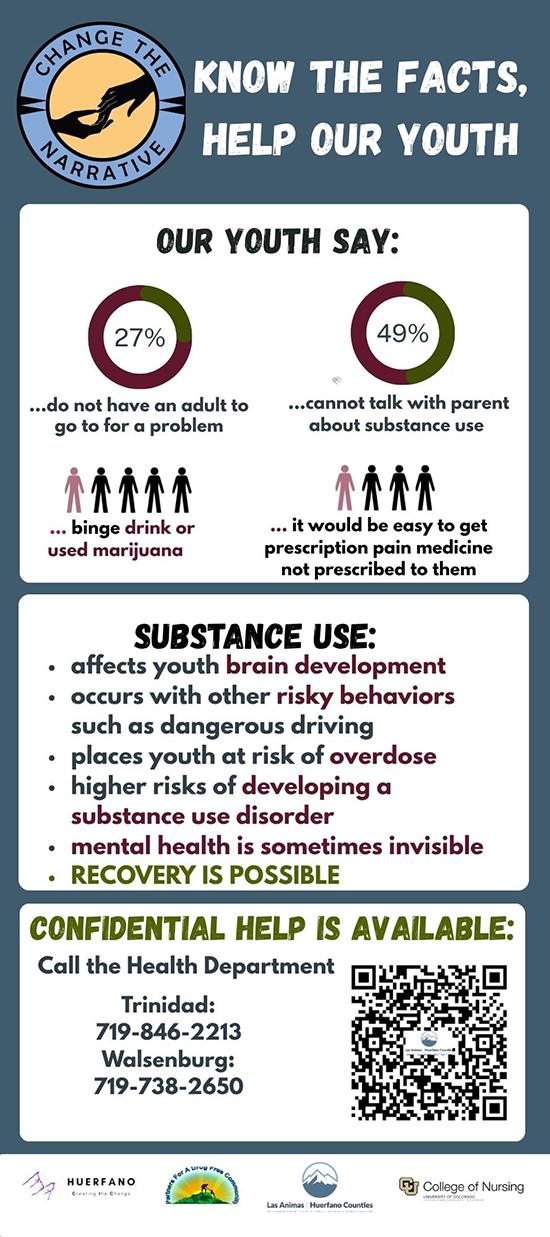What Data Shows
Scope of the Problem – National and State Data
In 2023, more than 80,000 opioid-related overdose deaths occurred in the United States, according to the CDC. Synthetic opioids like fentanyl are driving the majority of these deaths. Colorado has also experienced a sharp increase in overdose fatalities, especially in rural and frontier regions with limited access to treatment services.
The Healthy Kids Colorado Survey (HKCS) offers insight into youth behaviors, protective factors, and risks. Highlights from the 2023 results include:
- Almost 1 in 4 high schoolers said it would be easy to get prescription pain medication not prescribed to them.
- 3 in 4 youth reported having a trusted adult to talk to about serious problems, but 26.9% did not.
- Around 1 in 4 youth reported poor mental health in the past month.
- 1 in 5 youth in Southwest Colorado reported binge drinking or marijuana use in the past month.
- Nearly half of youth do not discuss substance use with parents or guardians.
- About 400,000 Coloradans are living in recovery.

Impact on Youth, Families, and Communities
SUD negatively impacts people, families, and the whole community. Staying informed about what substance use in Colorado looks like is the first step to solving the problem.
Young people who start using alcohol or drugs early are at higher risk of developing serious problems. Many things—like family, friends, environment, and biology—play a role. Acting early with support and screening can help prevent long-term harm.
Here are some facts on the on the impacts of SUD
- Starting before age 15 makes youth 5 times more likely to develop substance use disorder.
- Teen years are the most vulnerable time.
- Early use can move from trying to occasional use to repeated use.
- Injection drug use places youth at direct risk for HIV. And in a broad sense drug use places youth at risk of overdose.
- Youth opioid and alcohol use is directly linked to sexual risk behaviors.
Students who report ever using prescription drugs—without a doctor's prescription—are more likely than other students to have been the victim of physical or sexual dating violence.


